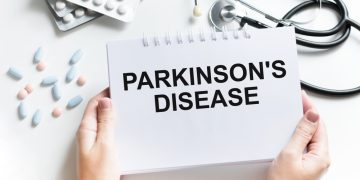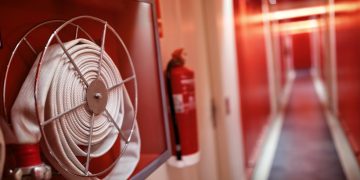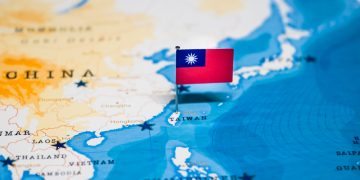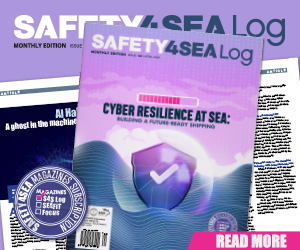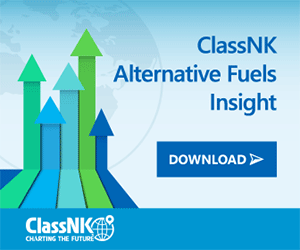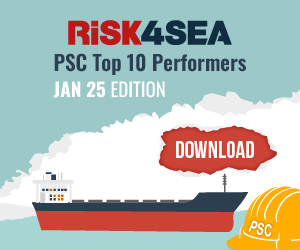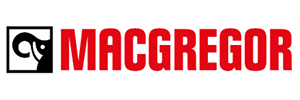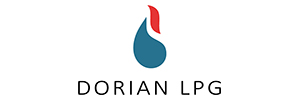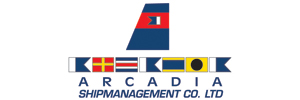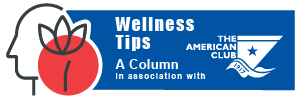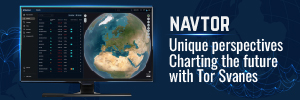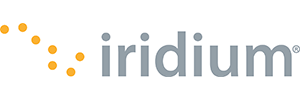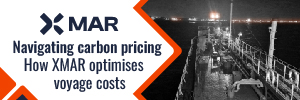The Marine Environment Protection Committee (MEPC) met for its 83rd session in person at IMO Headquarters in London from 7 to 11 April 2025, making key decisions that shape the future of maritime sustainability.
According to DNV, the 83rd session of the IMO’s Marine Environment Protection Committee (MEPC 83) approved new requirements on greenhouse gas (GHG) fuel intensity, in combination with a pricing and reward mechanism, taking effect from 2028. Other important decisions include the approval of regulations to designate the North-East Atlantic Ocean as an Emission Control Area (ECA). Furthermore, DNV has provided an overview of the following key outcomes:
Meeting highlights
- Approved new requirements on greenhouse gas (GHG) fuel intensity, in combination with a pricing and reward mechanism
- Adopted amendments to MARPOL Annex VI and the NOx Technical Code to allow for the use of multiple engine operational profiles (MEOP) and for the re-certification of engines
- Approved amendments designating North-East Atlantic as an Emission Control Area (ECA)
- Completed the first phase of the review of the Carbon Intensity Indicator (CII), Ship Energy Efficiency Management Plan (SEEMP) and Energy Efficiency Existing Ship Index (EEXI)
- Continued the review of the Ballast Water Management (BWM) Convention
Adoption of amendments to mandatory instruments
MEPC 83 adopted amendments to the NOx Technical Code to allow for the use of multiple engine operational profiles for a marine diesel engine. The amendments will enter into force on 1 March 2027. They will apply no later than 1 January 2028 to a new single engine or a parent engine of an engine family or group that has not been previously certified. For a new member engine to an engine family or group for which the parent engine was certified before 1 January 2028, it shall be documented no later than 1 January 2030 that the engine family or group complies with the amendments. The amendments do not apply to already certified engines, unless that engine has gone through substantial modifications or an identical replacement engine has been installed on or after 1 January 2028.
MEPC 83 adopted amendments to the NOx Technical Code concerning certification of an existing engine subject to substantial modification or to a higher NOx requirement tier. The amendments describe a process to be followed to allow for the re-certification of engines retrofitted on board. The amendments will enter into force on 1 September 2026, with parties invited to consider the early application of the amendments.
Harmful aquatic organisms in ballast water
MEPC 83 continued the work on amendments to the Ballast Water Management (BWM) Convention and associated instruments. Key discussions included adding several new objectives to the list of amendments under review and the determination that the new additional tests on challenging water quality (CWQ) performance during type approval would be mandatory for all BWM systems as an additional evaluation to the currently existing general testing parameters and test conditions.
A Correspondence Group was re-established with the aim to finalize amendments to mandatory instruments for approval at MEPC 84 in spring 2026.
Review of the Carbon Intensity Indicator (CII)
MEPC 83 completed the first phase of the review of the short-term GHG measures (CII, SEEMP and EEXI) by considering gaps and challenges. No gaps were identified regarding the EEXI.
The CII reduction (Z) factors were set for the years 2027 to 2030 as follows:
The second review phase commences on 1 January 2026 through intersessional and Correspondence Groups, and is expected to conclude by spring 2027.
Data Collection System (DCS)
MEPC 83 agreed to increase the accessibility of DCS data, while agreeing on the need to further strengthen the anonymization of the data.
The definition of “underway” was changed to be the period between full ahead on passage (FAOP) and end of sea passage (EOSP). The sample form of ship fuel oil consumption data collection plan was also updated.
EEDI/EEXI
MEPC 83 agreed to refer to both the updated ISO standard 15016:2025 and the ITTC Recommended Procedure for the conduct of sea trials in the EEDI survey and certification guidelines. Within a transition period, the ISO standard 15016:2015 can be used if the sea trial is conducted before 1 May 2026.
Measurement of non-CO2 GHG emissions
MEPC 83 finalized guidelines for test-bed and onboard measurements of methane (CH4) and nitrous oxide (N2O) emissions from marine diesel engines which can serve as a basis to apply emissions and slip factors other than those listed in the 2024 Guidelines on Life Cycle GHG Intensity of Marine Fuels. It also expected that these guidelines will become accepted under the EU ETS and FuelEU Maritime regulations.
A Correspondence Group was established to further develop the framework on the measurement and verification of non-CO2 GHG emissions, reporting to MEPC 84 in spring 2026.
Onboard carbon capture (OCCS)
A work plan on the development of a regulatory framework for the use of OCCS was agreed. The work plan will address both ship and land considerations pertaining to OCCS, taking into account their incorporation into existing and future regulatory frameworks such as the EEDI. The work is set to be finalized in 2028.
A Correspondence Group was established to develop the OCCS framework, reporting to MEPC 84 in spring 2026.
Reduction of GHG emissions
MEPC 83 approved a new Chapter 5 and consequential amendments to other regulations in MARPOL Annex VI – the IMO Net-Zero Framework. The amendments were approved by a majority vote.
The amendments are due for adoption at an extraordinary MEPC session in October 2025. Adoption requires acceptance by two-thirds of the parties to MARPOL Annex VI representing at least 50% of the gross tonnage of the world’s merchant fleet.
The new regulations apply to all ships above 5,000 GT, except ships trading solely domestically and platforms including FPSOs, FSUs and drilling rigs, and semi-submersible vessels.
The requirements are based on a GHG fuel intensity (GFI) metric, which is the well-to-wake GHG emissions per unit of energy used on board a ship. This also includes electricity delivered to the ship, wind propulsion and solar power. The attained GFI is to be reported annually by the ship as part of the DCS.
Two tiers of requirements are set on the annual attained GFI for a ship: a Base target and a more stringent Direct Compliance target. Each ship is required to meet the Direct Compliance target. The regulations include annual GFI reduction factors to 2035, as shown in the table and figure below.
| Year | Base | Direct |
|---|---|---|
| 2028 | 4% | 17% |
| 2029 | 6% | 19% |
| 2030 | 8% | 21% |
| 2031 | 12.4% | 25.4% |
| 2032 | 16.8% | 29.8% |
| 2033 | 21.2% | 34.2% |
| 2034 | 25.6% | 38.6% |
| 2035 | 30% | 43% |
The Base target for 2040 is set to 65%.
If a ship has a GFI lower than the Direct Compliance target, it will receive Surplus Units (SUs). Conversely, if a ship has a GFI above the Direct Compliance target, it has a negative compliance balance and accrues two tiers of compliance deficits:
- For a GFI between the Base and the Direct Compliance targets, a ship generates a Tier 1 compliance deficit.
- For a GFI above the Base target, a ship generates both a Tier 1 compliance deficit (for the emissions between the Base and the Direct Compliance targets) and a Tier 2 compliance deficit (for the emissions above the Base target).
To handle deficits and surpluses, the requirements include several compliance approaches.
A ship with a compliance surplus can transfer SUs to ships with a compliance deficit (similar to the FuelEU’s concept of compliance pooling), or it can bank the units for later use within the two subsequent calendar years. A ship can balance its Tier 2 compliance deficit with SUs from other ships, or it can buy Remedial Units (RUs) (similar to the FuelEU’s penalty) from the IMO Net-Zero Fund. The Tier 1 compliance deficit can only be compensated by Tier 1 RUs.
The initial RU prices are set as follow:
- Tier 1 RU: US$100 per tonne of CO2eq
- Tier 2 RU: US$380 per tonne of CO2eq
The regulations are designed in this manner so that most ships will use sufficient low-GHG emission fuels to reach the Base target and then buy Tier 1 RUs. Alternatively, they can buy SUs to cover the Tier 2 compliance deficit and then acquire Tier 1 RUs. This ensures that a certain amount of revenue is generated for disbursement purposes, while ensuring that the fleet achieves at least the Base target.
The proceeds from the sale of RUs will go into the IMO Net-Zero Fund, to be set up and managed by the IMO. No revenues will be paid to IMO member states; they will all go directly from the shipping company into the Fund. Part of the revenues are intended to be circulated directly back to the industry as a reward for using zero and near-zero, fuels and/or energy sources. The reward will be determined by 1 March 2027.
The reporting of the GFI will be enabled by expanding the current DCS scheme. Each ship will be required to develop or update its data collection and reporting plan (SEEMP Part II) to include the necessary elements to calculate the GHG intensity. The plan must be verified and kept on board together with a Confirmation of Compliance prior to the start of the first reporting period, which is 1 January 2028.
The regulations mandate that the GHG emissions factors and sustainability aspects should be certified by a recognized Sustainable Fuels Certification Scheme (SFCS). SFCS are to be approved by the MEPC, and the IMO will publish a list of recognized SFCSs by 1 March 2027. This list will be periodically updated.
The GHG emissions factors and information on sustainability aspects should be provided on the Fuel Lifecycle Label (FLL) and accompany the Bunker Delivery Note when the fuel is delivered.
The new regulations on the IMO Net-Zero Framework will be reviewed every five years. The review will consider potential amendments to the annual GFI reduction factor and the possible inclusion of ships down to 400 GT. Significant work remains before the envisaged entry into force of the basket of measures to develop the necessary guidelines.
Carriage of biofuel blends on bunker ships
An interim circular was approved allowing conventional bunker ships, certified as oil tankers under MARPOL Annex I, to carry biofuel blends containing up to 30% biofuel.
In-water cleaning of ship biofouling
A circular was approved providing guidance on matters relating to in-water cleaning of ships in line with the 2023 Biofouling Guidelines.
Guidelines on Selective Catalytic Reduction (SCR) systems
The 2025 SCR Guidelines, aiming to remove ambiguities and ensure consistent application, were adopted. They apply to SCR systems installed on ships which are keel-laid on or after 1 November 2025, or to ships with keels laid before that date if the SCR system has a contractual delivery date on or after 1 May 2026 or, in the absence of a contractual delivery date, the actual delivery of the SCR system to the ship takes place on or after 1 May 2026.
Guidelines for the development of the Inventory of Hazardous Materials (IHM)
Amendments the 2023 IHM Guidelines were adopted clarifying the relevant threshold for cybutryne contained in antifouling systems when samples are taken directly from the hull or from wet paint containers.
Marine plastic litter
MEPC 83 adopted the 2025 Action Plan to Address Marine Plastic Litter from Ships, including the new action on reducing the environmental risks of transporting plastic pellets at sea.
Identification and protection of special areas
North-East Atlantic ECA
The North-East Atlantic was approved as an Emission Control Area (ECA) for SOx, PM and NOx, with a view to adoption at the extraordinary MEPC session in October 2025. This ECA covers the Exclusive Economic Zones (EEZ) and territorial seas of Greenland, Iceland, the Faroe Islands, Ireland, the United Kingdom, France, Spain and Portugal. Entry into force is expected to be in 2027, with the 0.10% sulphur limit taking effect 12 months later. The requirement for NOx Tier III engine certification will apply to ships contracted on or after 1 January 2027, or in the absence of a building contract, constructed (keel-laid) on or after 1 July 2027, or delivered on or after 1 January 2031. Note that these dates may be subject to change upon the formal adoption of the MARPOL amendments.
Particularly Sensitive Sea Areas (PSSAs)
MEPC 83 agreed in principle to the designation of the Nasca Ridge National Reserve and the Grau Tropical Sea National Reserve off the coast of Peru as PSSAs, subject to further development and approval of the proposed associated protective measures such as prohibitions on discharges and on the dumping of pollutants, waste and ballast water in these areas
New work programme outputs
MEPC 83 agreed to new outputs to the work programme as follows:
- Assessment of the implementation of the Hong Kong Convention through an experience-building phase and development
- Development of a legally binding framework for the control and management of ships’ biofouling to minimize the transfer of invasive aquatic species
- Review and amendment of the NOx Technical Code 2008 to provide a means for certification of engines using non-carbon-containing fuel or mixtures of carbon-containing and non-carbon-containing fuels
- Development of guidelines for the management of ammonia effluent generated by ships using ammonia as fuel
Ship recycling
Regarding the potential legal ambiguity concerning the relationship between the Hong Kong Convention and the Basel Convention, with respect to the transboundary movement of ships intended for recycling, it was confirmed that the topic of ship recycling will be considered by the Base Convention Conference of Parties (COP 17) on 28 April to 9 May 2025.







